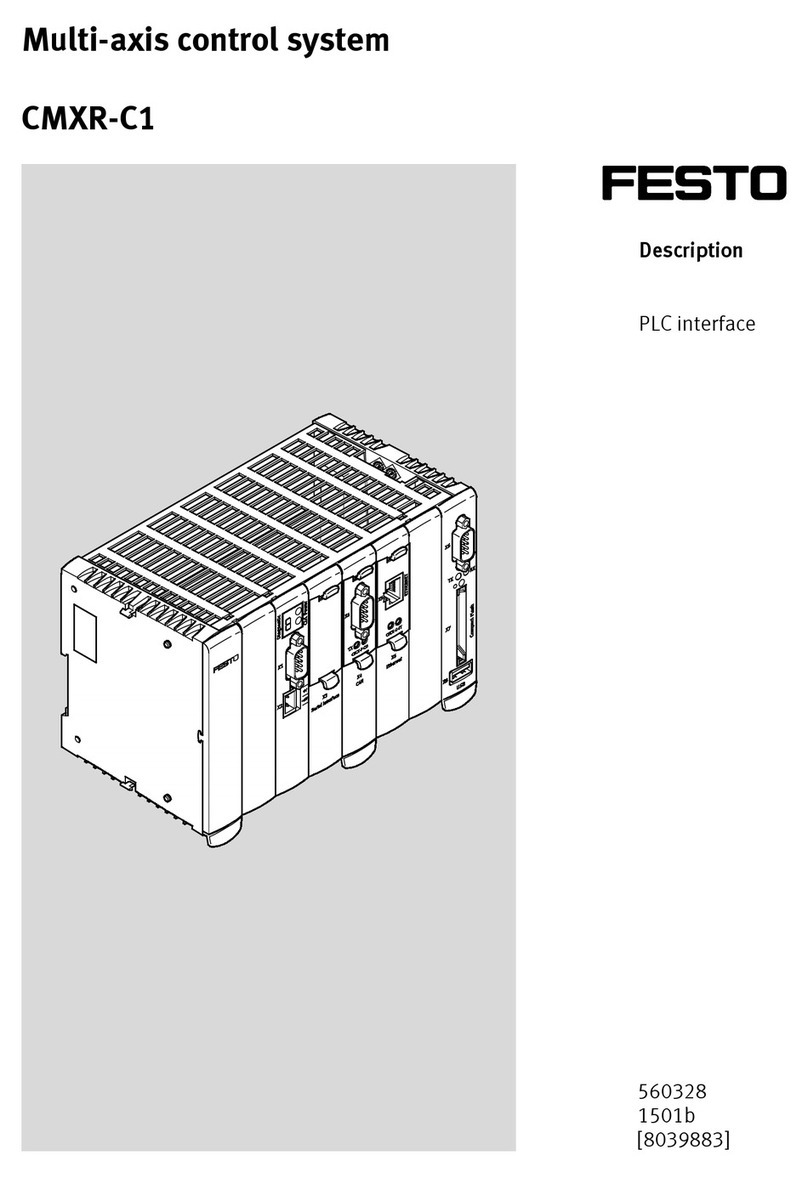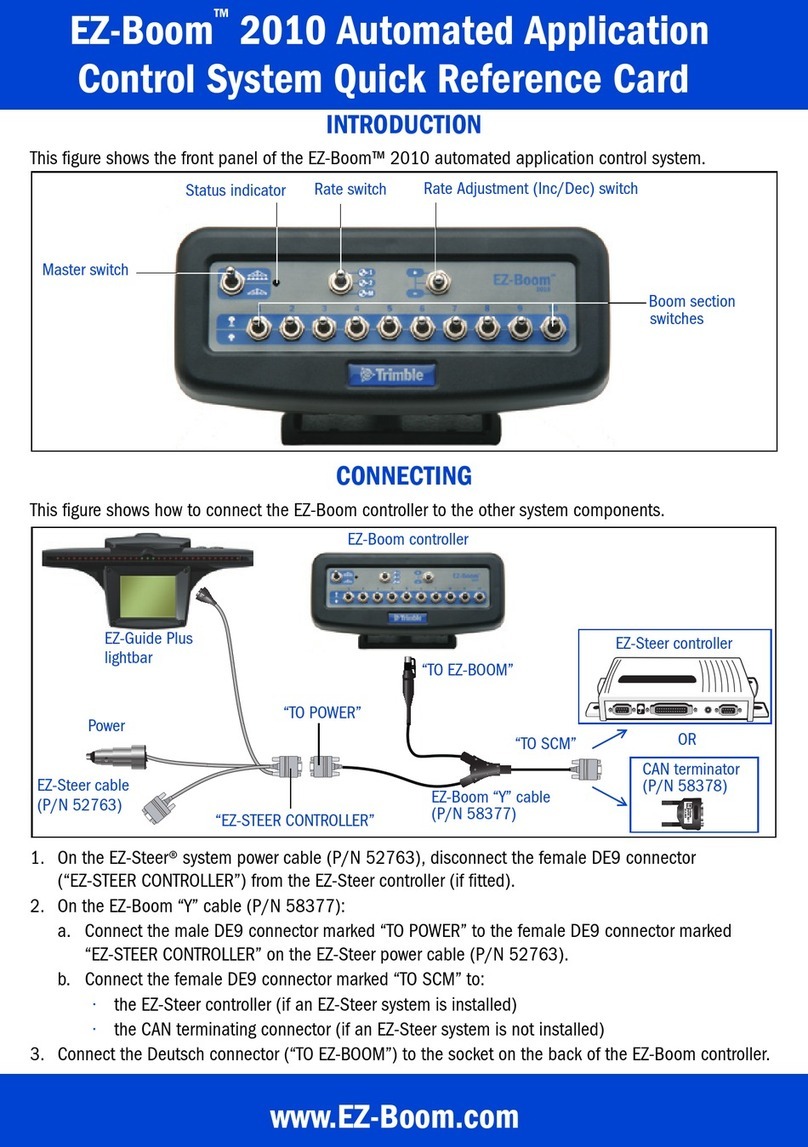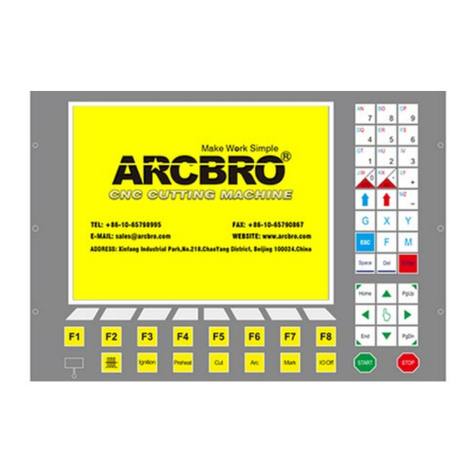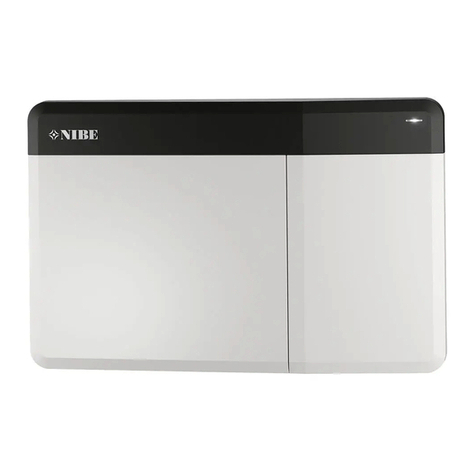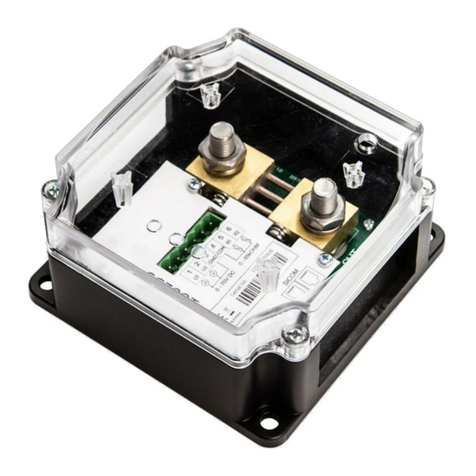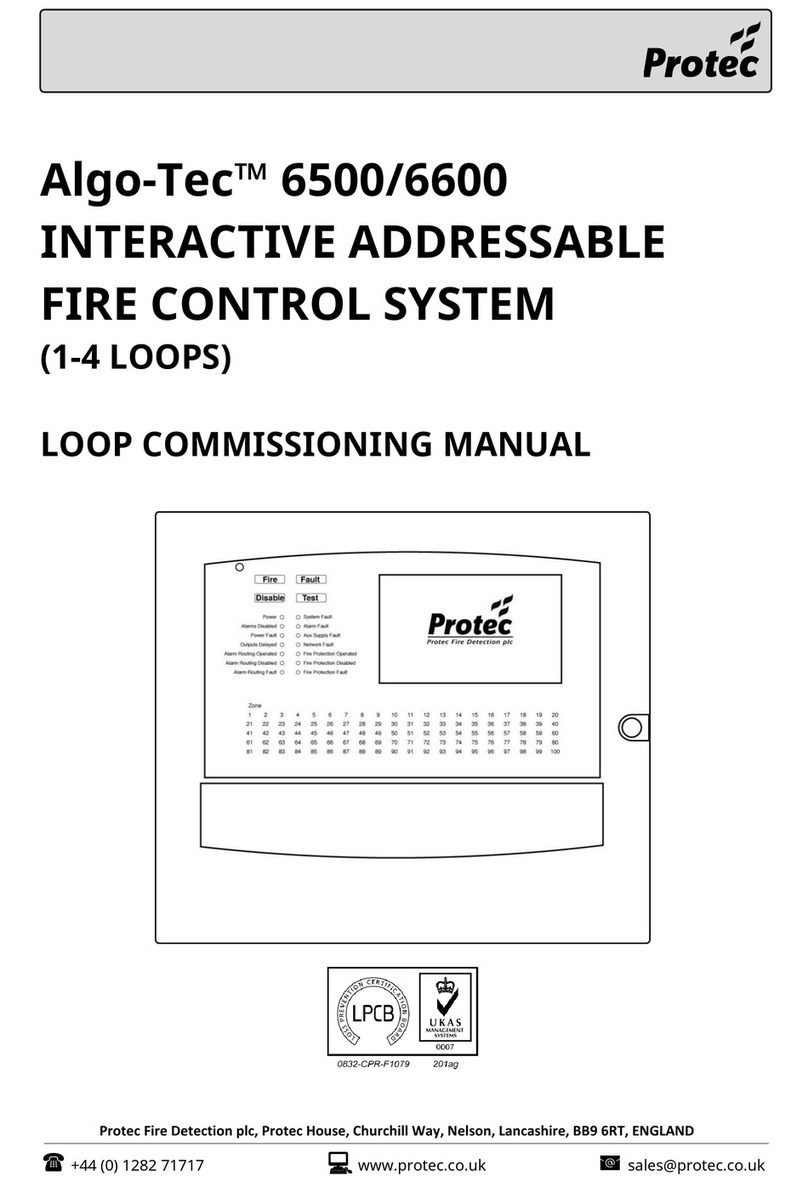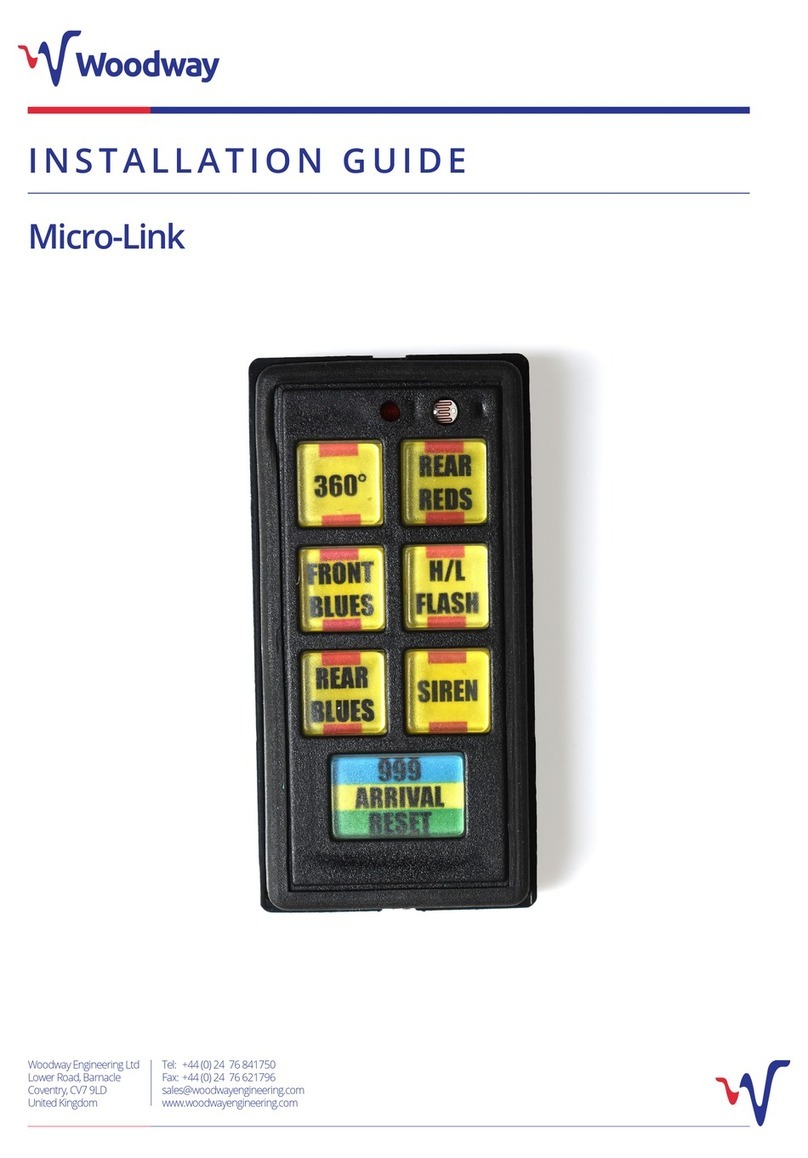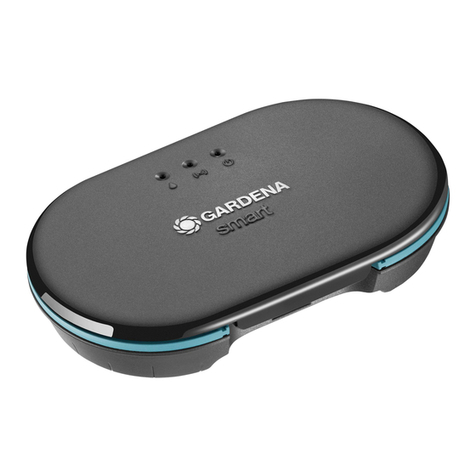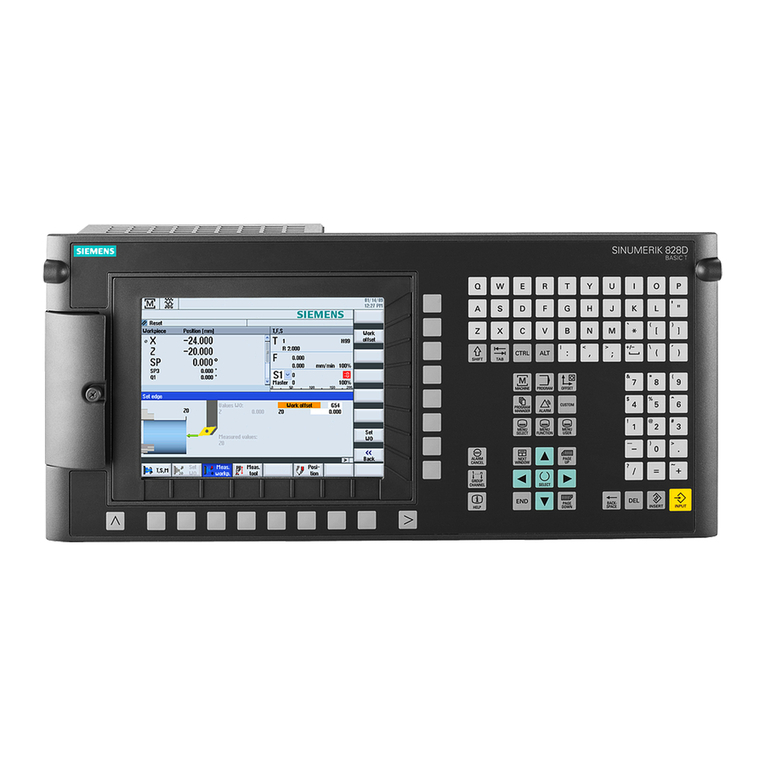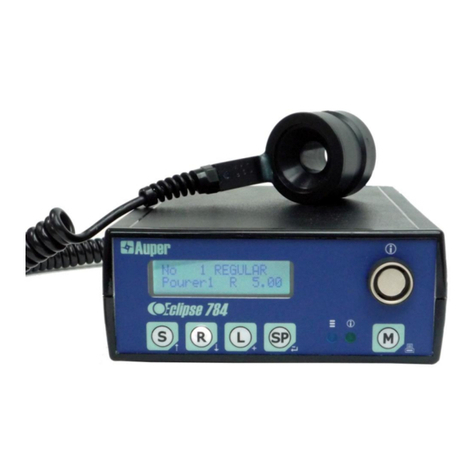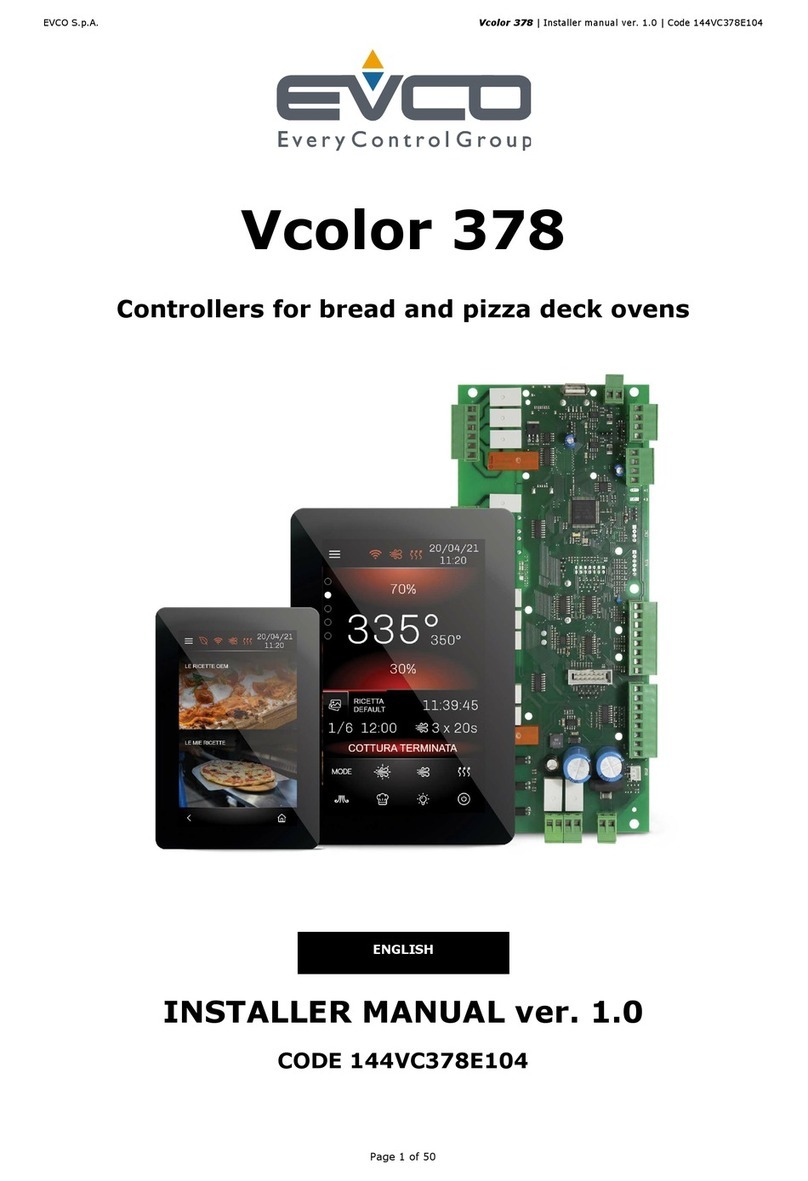Festo Checkbox Compact CHB-C-X User manual

Manual
Checkbox Compact
Type CHB-C-X
Manual
533412
en 1102d
[757659]
Checkbox Compact

Festo Checkbox ® is a registered trademark of Festo AG & Co. KG,
D-73726 Esslingen, Germany

Contents and general instructions
I
Festo P.BE-CB-COMP-EN en 1102d
Original de.......................................
Edition en 1102d..................................
Designation P.BE-CB-COMP-EN......................
Order no. 533412..................................
E(Festo AG & Co. KG, D-73726 Esslingen, Germany, 2011)
Internet: http://www.festo.com
E-mail: service_international@festo.com
The reproduction of this document and disclosure to third
parties and the utilisation or communication of its contents
without explicit authorization is prohibited. Offenders will
be held liable for compensation of damages. All rights
reserved, in particular the right to carry out patent, utility
model or ornamental design registrations.

Contents and general instructions
II Festo P.BE-CB-COMP-EN en 1102d

Contents and general instructions
III
Festo P.BE-CB-COMP-EN en 1102d
Contents
Intended use VI..........................................................
Operating requirements VIII.................................................
Target group VIII..........................................................
Service VIII...............................................................
Scope of delivery VIII.......................................................
Important user instructions IX..............................................
Notes on the use of this manual XII...........................................
DocumentationontheCheckbox XII..........................................
Product-specific terms and abbreviations XIII...................................
1. System summary 1-1...............................................
1.1 The Festo Checkbox 1-3.............................................
1.2 Software packages for the Checkbox 1-4...............................
1.3 Functional range 1-5................................................
1.4 Operating principle 1-6.............................................
1.5 Buffer zone 1-9....................................................
2. Fitting and commissioning 2-1.......................................
2.1 General instructions 2-3.............................................
2.2 Mounting 2-4......................................................
2.3 Electrical connection 2-7............................................
2.3.1 Selection of the power supply unit 2-10..........................
2.3.2 Connection of the operating voltage 2-11........................
2.3.3 Power supply for external components 2-12......................
2.4 Adapting system parameters with CheckKon 2-13.........................
2.5 Commissioning the Checkbox 2-15.....................................
2.6 Error diagnostics 2-20...............................................

Contents and general instructions
IV Festo P.BE-CB-COMP-EN en 1102d
3. The I/O module 3-1................................................
3.1 Interfaces 3-3.....................................................
3.2 ACTUATORS 3-5...................................................
3.3 BUFFER/FEEDER 3-7...............................................
3.4 DIAG 3-10.........................................................
3.5 ENCODER 3-12.....................................................
3.6 PLC 3-14...........................................................
3.6.1 Start/Stop mode 3-17........................................
3.6.2 Controlling the teach procedure 3-19............................
3.6.3 Selecting the parts type 3-19..................................
3.6.4 Counting function 3-23.......................................
3.6.5 Actuators 3-26..............................................
3.6.6 Buffer zone sensors/small parts conveyor 3-27...................
3.6.7 Fault messages 3-30.........................................
3.6.8 Locking the control panel 3-31.................................
4. Teaching parts 4-1.................................................
4.1 Preparing the Teach procedure 4-3....................................
4.2 The Teach procedure 4-5............................................
4.2.1 Positioning the sample parts 4-9..............................
4.2.2 Observing the scatter of characteristics 4-10.....................
5. Testing parts 5-1..................................................
5.1 The test procedure 5-3..............................................
5.2 Test mode 5-4.....................................................
5.3 Influence of tolerance 5-7...........................................
5.4 Evaluation of the test results 5-9......................................
5.4.1 Checking the features 5-9....................................
5.4.2 Checking the orientation 5-10..................................
6. Maintenance 6-1..................................................

Contents and general instructions
V
Festo P.BE-CB-COMP-EN en 1102d
A. Technical appendix A-1.............................................
A.1 Operating malfunctions A-3..........................................
A.1.1 General fault finding A-3.....................................
A.1.2 Fault messages and warnings A-4..............................
A.2 Status displays on the control panel A-9................................
A.3 Examples for calculation of the features A-12.............................
A.3.1 Band width and tolerance A-12.................................
A.3.2 Scatter of characteristics A-14.................................
A.3.3 Inspection part deviation A-15.................................
A.4 Connections A-17...................................................
A.5 Technical data A-22..................................................
A.6 Accessories A-25....................................................
B. Index B-1.........................................................

Contents and general instructions
VI Festo P.BE-CB-COMP-EN en 1102d
Intended use
The Festo Checkbox®has been designed for use under
normal operating conditions in closed rooms in industrial
installations.
The Checkbox Compact described in this manual is intended
exclusively for use as follows:
for contactless checking of the position and quality of small
parts e.g. screws, springs, bolts, which pass through on a
conveyor belt.
Use the Checkbox only as follows:
– as intended in an industrial environment
– in perfect technical condition
– in original status without unauthorised alterations. Only
the conversions or modifications described in the docu-
mentation supplied with the product are permitted. The
guarantee will become invalid if the Checkbox is opened.
The maximum values specified for pressures, temperatures,
electrical connections etc. must not be exceeded.
Please observe the standards specified in the relevant
chapters and comply with the regulations of the trade associ-
ation and the German Technical Control Board (TÜV), the VDE
conditions as well as the relevant national regulations.

Contents and general instructions
VII
Festo P.BE-CB-COMP-EN en 1102d
Laser irradiation
The Checkbox is a device of laser class 2 according to
EN 60825-1:1994 + A1:2002 + A2:2001 (Class II according
to CFR 21 §1040.10, USA), but contains a laser of class 3B.
Therefore, observe the following:
• Do not open the device.
• Do not remove any housing parts (e.g. prism support,
covers).
• Operate only with intact housing.
Avoid injuries to the eyes due to laser irradiation. Observe
the following rules for working with lasers of class 2:
• Do not bring any mirrors or reflecting items into the laser
beam.
• Never stare into the laser beam and never direct the
bean into the eyes of other people.
• If the laser beam hits the eye, consciously close your
eyes and move your head out of the beam.
Work with laser devices is subject to accident prevention
regulations. Users must be instructed on the risks of look-
ing directly into the beam.

Contents and general instructions
VIII Festo P.BE-CB-COMP-EN en 1102d
Operating requirements
– The features of the conveyed part which determine the
orientation and quality must be recognizable and
distinguishable for the Checkbox:
– ItmustbepossibletointegratetheCheckboxinthe
material flow.
Target group
This manual is intended exclusively for technicians trained in
control and automation technology who have experience in
installing and commissioning electronic systems.
Service
Please consult your local Festo Service if you have any
technical problems.
Scopeofdelivery
Checkbox Compact Module with control panel, I/O interface, laser beam and camera
Documentation Checkbox Compact manual
Accessories 24-pin cable for connecting the PLC

Contents and general instructions
IX
Festo P.BE-CB-COMP-EN en 1102d
Important user instructions
Danger categories
This manual contains instructions on the possible dangers
which may occur if the product is not used correctly. These
instructions are marked (Warning, Caution, etc.), printed on a
shaded background and marked additionally with a picto-
gram. A distinction is made between the following danger
warnings:
Warning
This means that failure to observe this instruction may
result in serious personal injury and/or damage to
property.
Caution
This means that failure to observe this instruction may
result in personal injury and/or damage to property.
Note
This means that failure to observe this instruction may
result in damage to property.
The following pictograms also mark passages in the text
which warn about the incorrect handling of certain
components.
Electrostatically sensitive devices. Incorrect handling can
result in damage to components.

Contents and general instructions
XFesto P.BE-CB-COMP-EN en 1102d
Danger of injury caused by laser irradiation
Do not look into the laser beam. Incorrect handling can
lead to injury to the eye and/or skin.
Identification of specific information
The following pictograms designate texts that contain special
information.
Pictograms
Information
Marks recommendations, tips and references to other
information sources.
Accessories
Marks information on suitable accessories.
Environment
Marks sections dealing with environmentally protective
measures.
Text markings
SBullet points indicate activities that may be carried out in
any order.
1. Figures denote activities which must be carried out in the
numerical order specified.
– Hyphens indicate general activities.

Contents and general instructions
XI
Festo P.BE-CB-COMP-EN en 1102d
Conventions
– The names of the operating, display and connecting
elements are represented in the text in upper case letters,
e.g. START, TEACH.
– Menu commands of the software are framed in brackets,
e.g. in the menu [Window], the command [System parame-
ters] opens the window for creating parameters.
– For selections within tree structures, e.g. for setting the
system parameters in CheckKon, the paths are marked
with a square. You will therefore find e.g. in the path
ZSystem ZOperating modes the parameter zLock the
Teach button = Off.
– Inputs and outputs of the plug connectors are specified
with the pin number as follows:
Input pin 1 I/1
Output pin 2 O/2
– Plug connectors are represented as when viewed on the
device. This representation corresponds to the view of the
(cable) connections which are to be wired.

Contents and general instructions
XII Festo P.BE-CB-COMP-EN en 1102d
Notes on the use of this manual
This manual refers to the standard designs of the Checkbox
Compact type CHB-C-X with operating system version 3.x.
When the Checkbox is switched on, the version number of the
operating system will be shown briefly (see Chapter 2.5).
The options and parameters available depend on the
operating system, the type of connected Checkbox and on the
factory pre-settings. Customer-specific designs may differ in
technical data, parameter settings and method of functioning.
The pre-setting of the Checkbox can be modified if required
with the software packages CheckKon (function “Modify
system”) or CheckOpti (see Chapter 1.2).
DocumentationontheCheckbox
Information on using the Checkbox can be found in the
following manuals:
Documentation Contents
Manual for checkbox CHB-C-X
– P.BE-CB-COMP-...
Description of the function,
commissioning, operation and
maintenance of the Checkbox.
Manuals on the software packages
– Software CheckKon P.SW-KON
– Software CheckOpti P.SW-OPTI
– Operation of the CheckKon software
– Operation of the CheckOpti software
Tab. 0/1: Documentation on the Checkbox

Contents and general instructions
XIII
Festo P.BE-CB-COMP-EN en 1102d
Product-specific terms and abbreviations
Term/abbreviation Significance
AUTO mode Operating mode of the Checkbox for automatic parts testing
(pre-set when CHB-C-X is started).
CHB-C-X A device of the type Checkbox Compact (without transporting device) for
identifying conveyed parts of a parts type.
C-value During the Teach procedure the C-value shows the extent of the
scatter of characteristics of the sample parts. The C-value specifies
the maximum value of the scatter of characteristics for the current
feature which differs to the greatest extent.
Deviation The Checkbox assesses the feature of an inspection part which differs
most from the Teach data. The smaller the value of the inspection part
deviation, the more accurately the inspection part corresponds to the
sample parts.
Feature Characteristic features are ascertained from the contour data of the
sample and inspection parts. These are e.g. length, height, etc. as well
as a feature for each configuration tool (CheckOpti).
Good part An inspection part on which all features lie within the tolerance.
Inspection parts All parts shown during the test procedure.
Laser class Labelling of the laser beam according to EN 60825-1:1994 + A1:2002
+ A2:2001. Laser devices are classified according to increasing degree
of danger into classes 1, 2, 3A, 3B and 4.
Class 2
An accidental, brief exposure (up to 0.25s) will not damage the eye.
With longer lasting exposure, damage to the eye is possible.
Laser devices of class 2 may be used without further protective meas-
ures, providing it can be guaranteed that during operation the user is
not required to look intentionally over a long period (longer than
0.25 s), or to look repeatedly into the laser beam or mirror-reflected
laser beam.
Class 3B
Lasers of class 3B can produce serious eye damage.
Longer radiation of a class 3B laser onto the skin causes erythema
formation (reddened skin), pigmenting, burns or photochemical
damage.

Contents and general instructions
XIV Festo P.BE-CB-COMP-EN en 1102d
Term/abbreviation Significance
Orientation The parts to be tested by the Checkbox can be placed on the conveyor
belt facing in different directions. During the Teach procedure you can
define the orientations by showing the different directions. Orientation
1 is the preferred orientation (nominal orientation)
Parts type Conveyed part defined by the Teach data of the sample parts.
Reject part An inspection part on which at least one feature lies outside the
tolerance.
Sample parts Good parts which have been selected for the Teach procedure and
which possess all the features necessary for identifying the parts type.
(System) parameters Settings of the Checkbox (in some cases can only be set with
configuration software)
Teach data All features ascertained during the Teach procedure, each with
min./max. limits and the average value.
TEACH mode Operating mode of the Checkbox in which the Teach procedure is
carried out.
Teach procedure During the Teach procedure, sample parts on the conveyor belt are
shown to the Checkbox and the features are scanned. This is also
referred to as “Teaching parts”.
Test data Thetestdataarethedatausedforthetest.Thesecorrespondtothe
Teach data plus admitted tolerances.
Test procedure During the test procedure, inspection parts on the conveyor belt are
shown to the Checkbox and graded according to their features with
regard to orientation and observance of the tolerances. This is also
referred to as “Testing parts”.
Tole ra nc e Factor in per cent related to the average values and which affects the
min./max. limits of all features.
Tab. 0/2: Terms and abbreviations

Contents and general instructions
XV
Festo P.BE-CB-COMP-EN en 1102d

System summary
1-1Festo P.BE-CB-COMP-EN en 1102d
System summary
Chapter 1

1. System summary
1-2 Festo P.BE-CB-COMP-EN en 1102d
Contents
1. System summary 1-1...............................................
1.1 The Festo Checkbox 1-3.............................................
1.2 Software packages for the Checkbox 1-4...............................
1.3 Functional range 1-5................................................
1.4 Operating principle 1-6.............................................
1.5 Buffer zone 1-9....................................................

1. System summary
1-3
Festo P.BE-CB-COMP-EN en 1102d
1.1 The Festo Checkbox
The Festo Checkbox ®enables the optical (contactless)
positioning and quality inspection of conveyed parts.
Table of contents
Other Festo Control System manuals
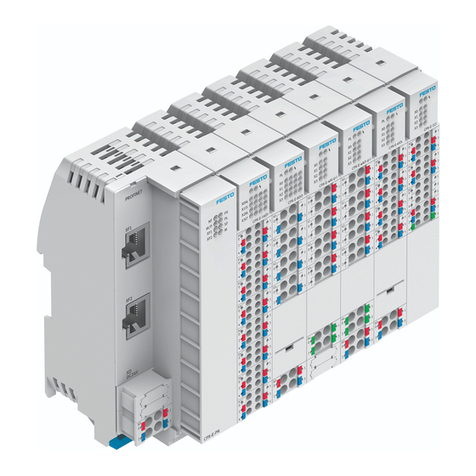
Festo
Festo CPX-E Parts list manual
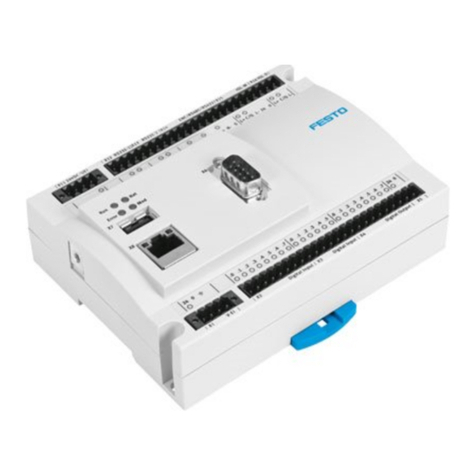
Festo
Festo Controller CECC-LK Parts list manual
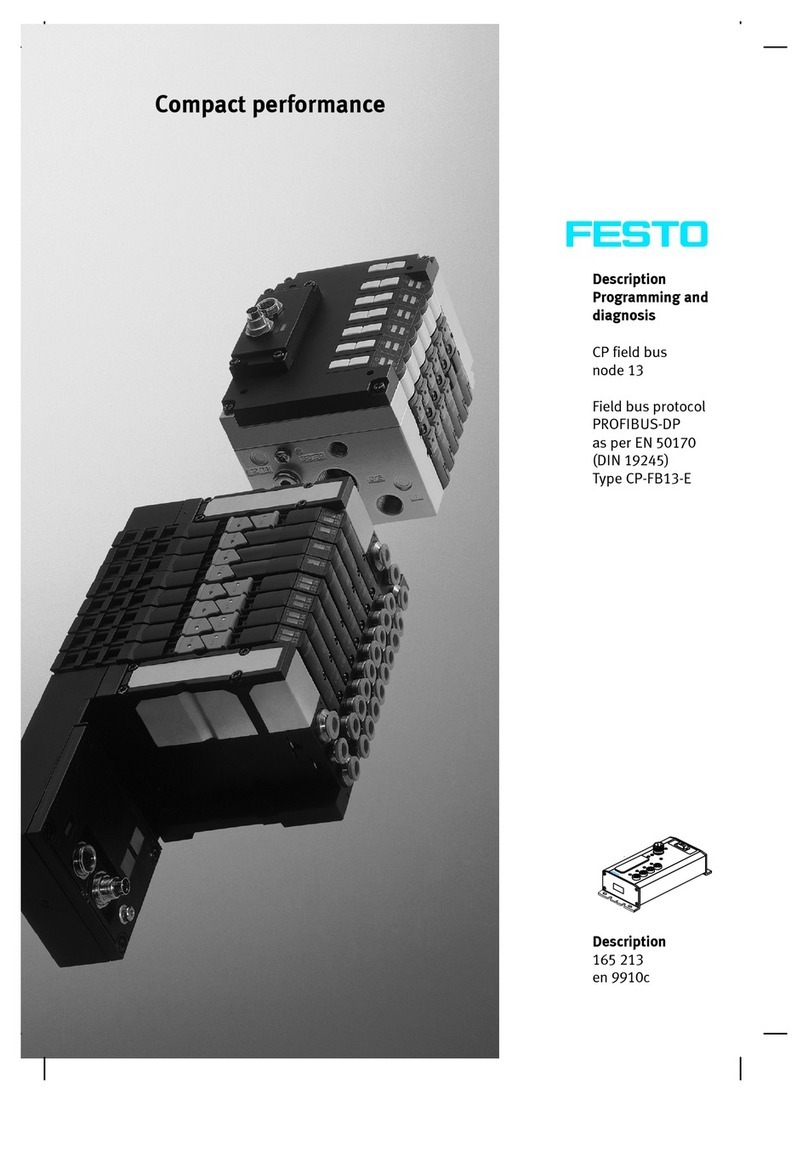
Festo
Festo CP-FB13-E User manual
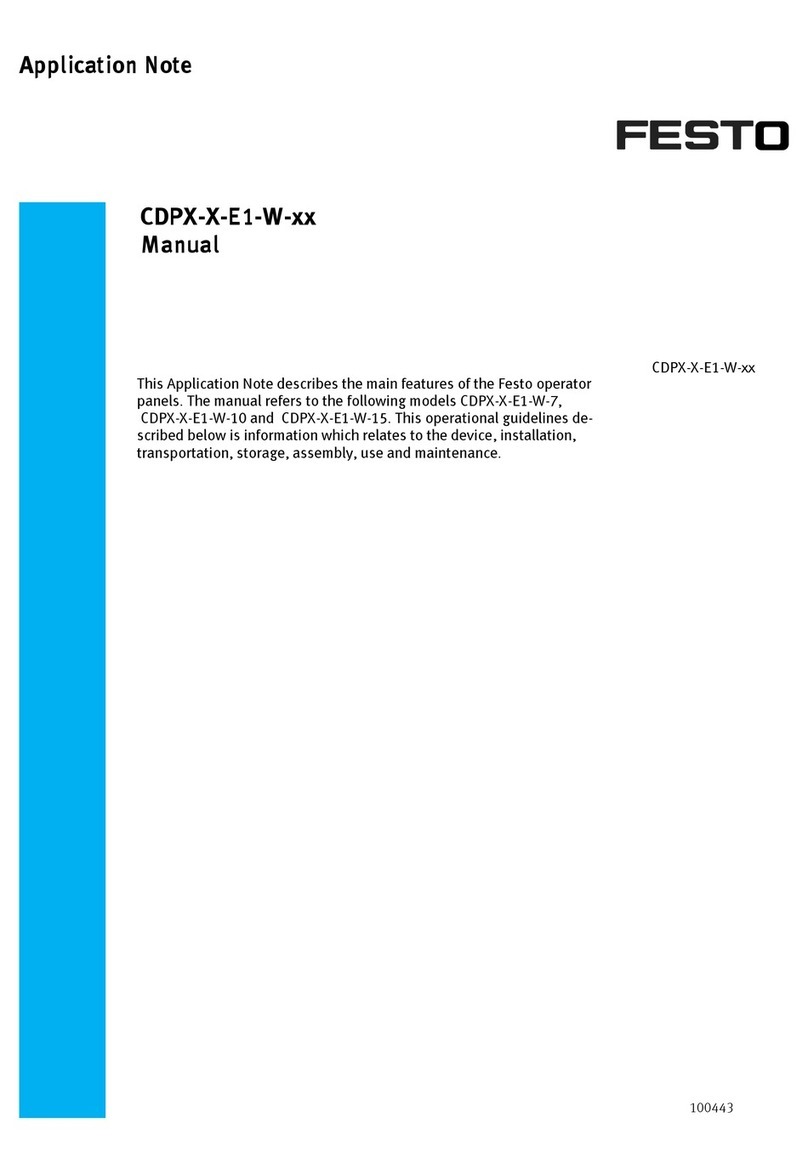
Festo
Festo CDPX-X-E1-W Series User manual
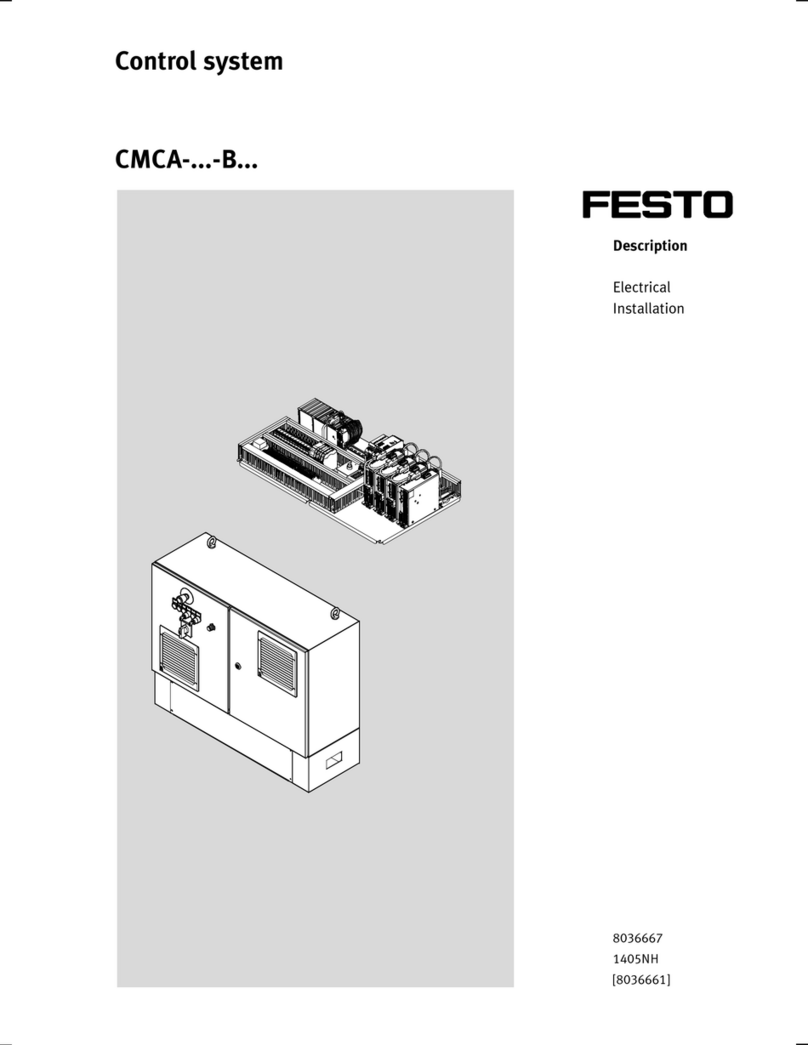
Festo
Festo CMCA-...-B Series User manual
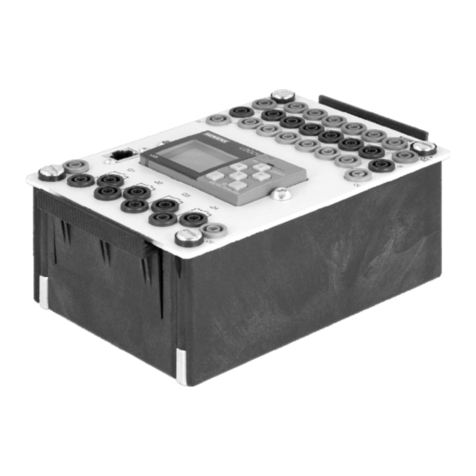
Festo
Festo LOGO! 8 TP EduTrainer User manual

Festo
Festo ZSB-1/8-B User manual
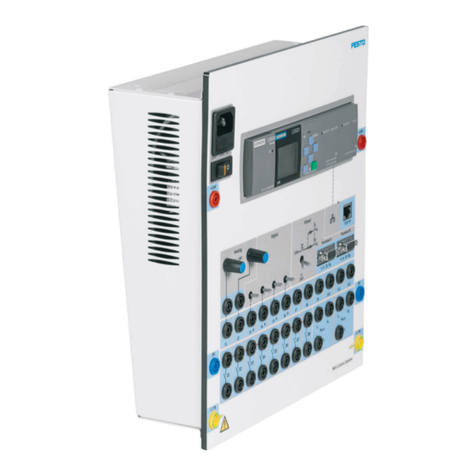
Festo
Festo EduTrainer 8071407 User manual
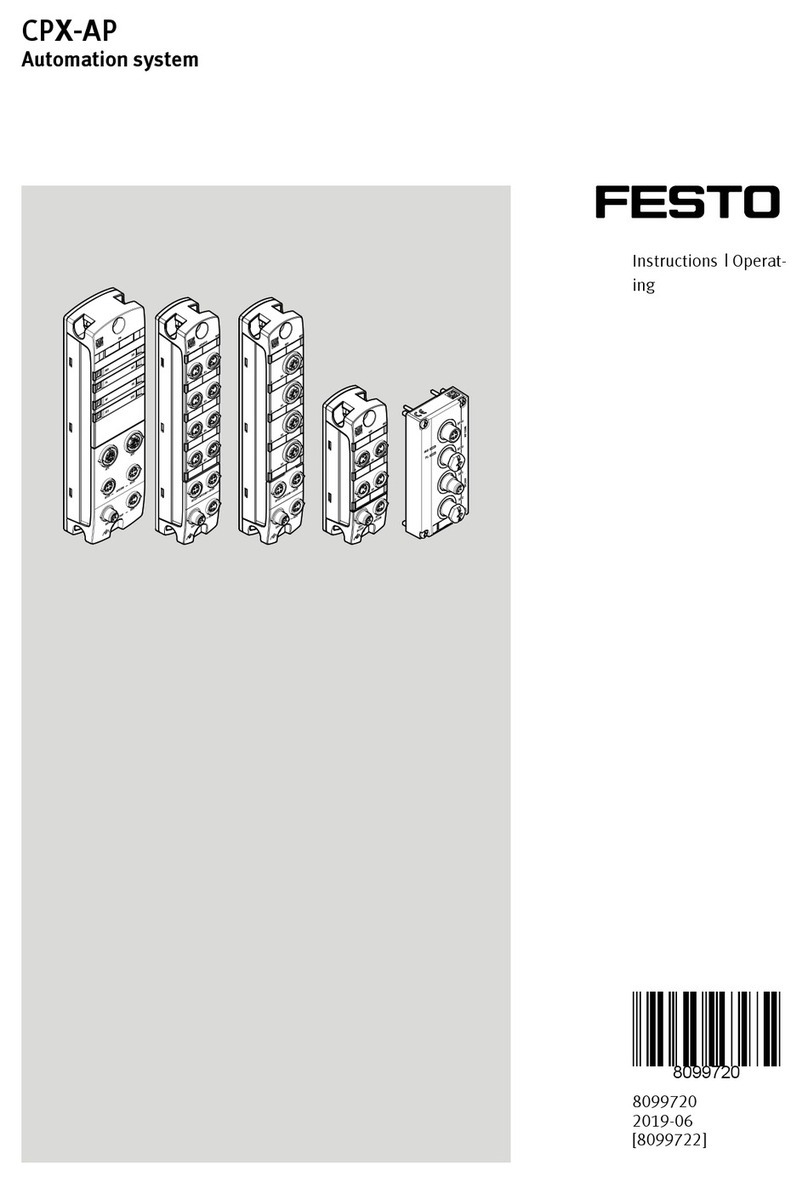
Festo
Festo CPX-AP Series User manual
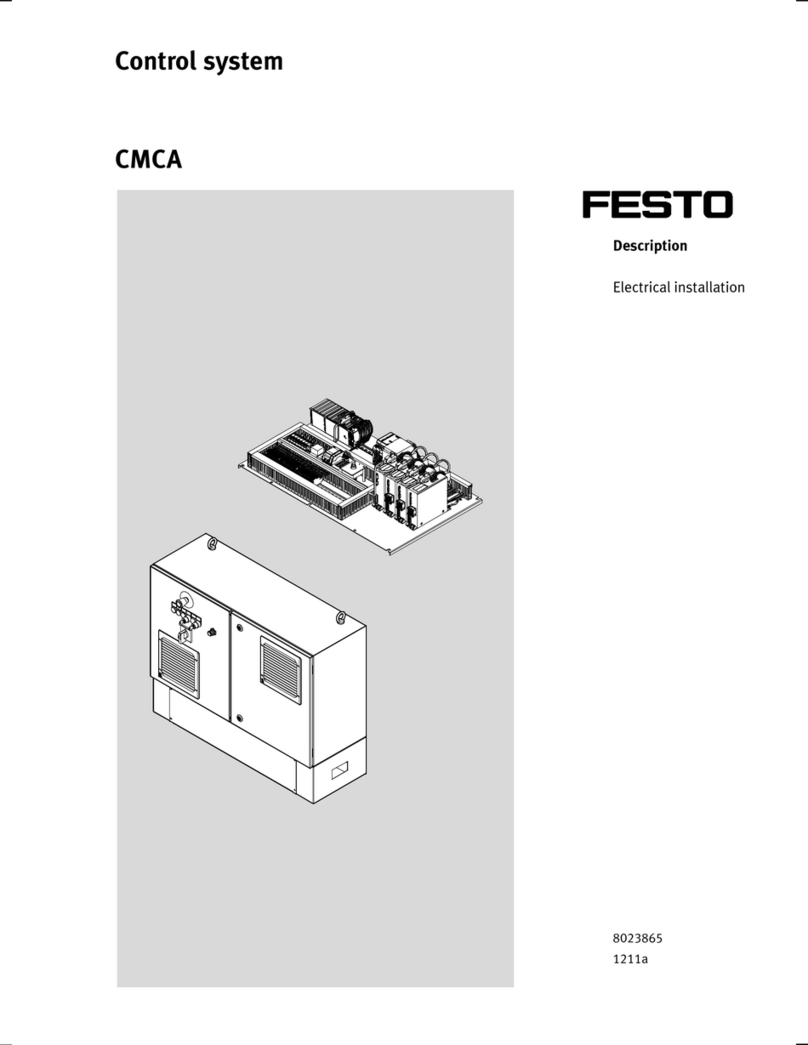
Festo
Festo CMCA series User manual
Popular Control System manuals by other brands
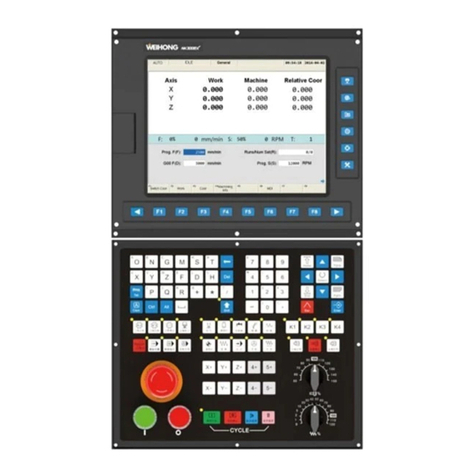
WEIHONG
WEIHONG NK300CX quick start guide
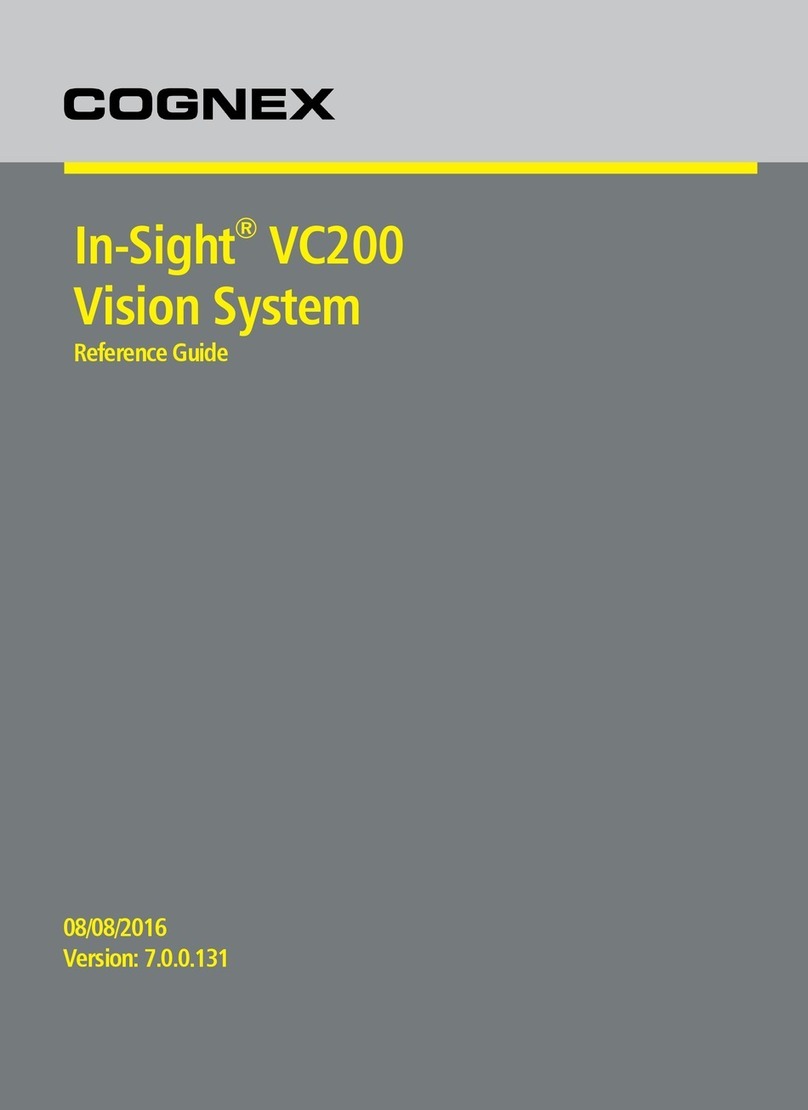
Cognex
Cognex In-Sight VC200 reference guide
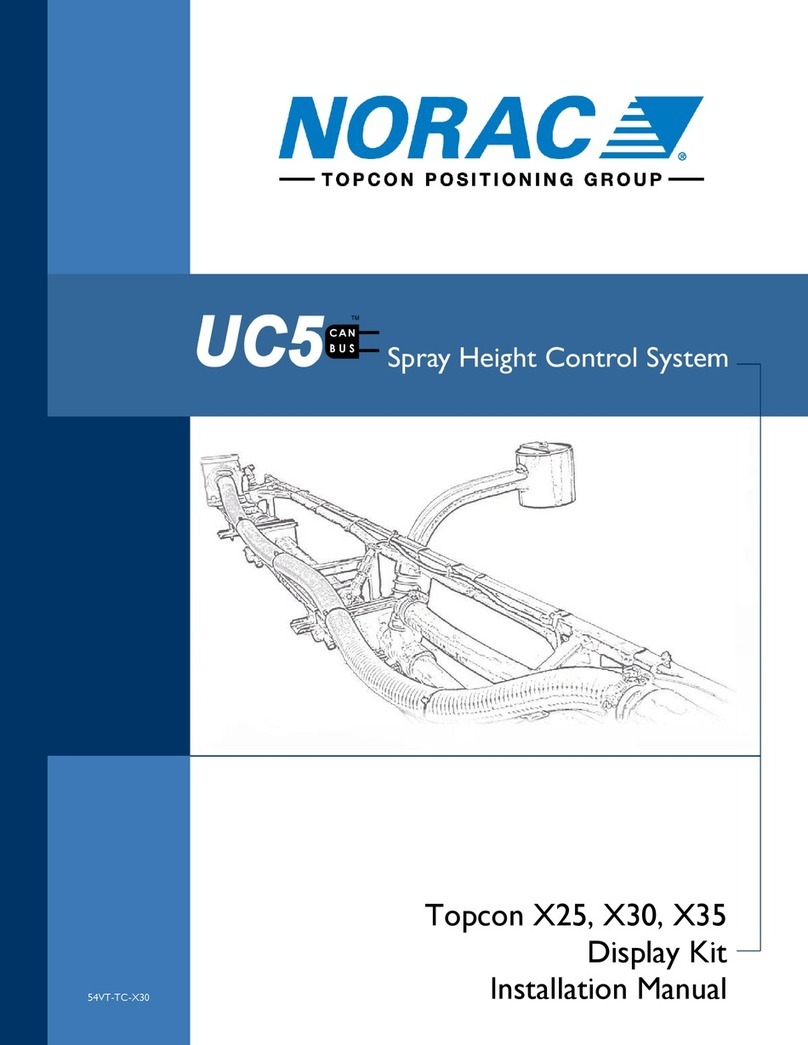
Topcon Positioning Group
Topcon Positioning Group NORAC UC5 installation manual
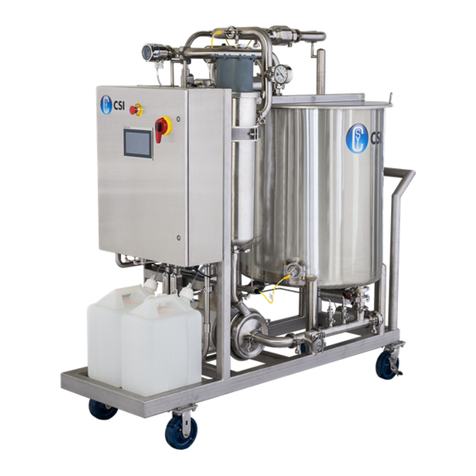
CSI
CSI COMPACT CIP Installation operation & maintenance
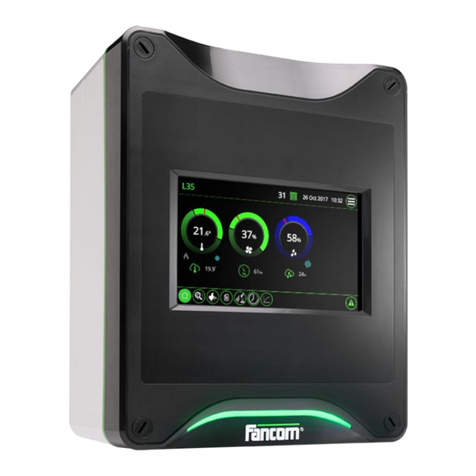
Fancom
Fancom Lumina 35 installation manual
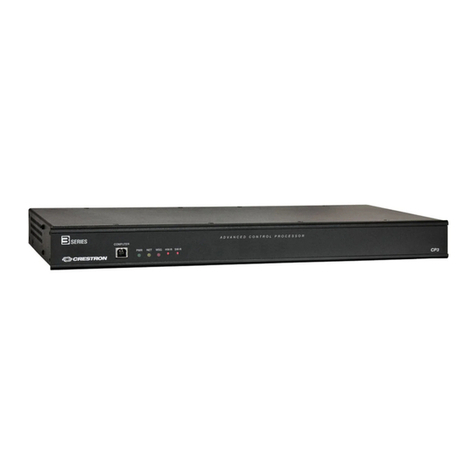
Crestron
Crestron 4K DigitalMedia 3-Series quick start guide
